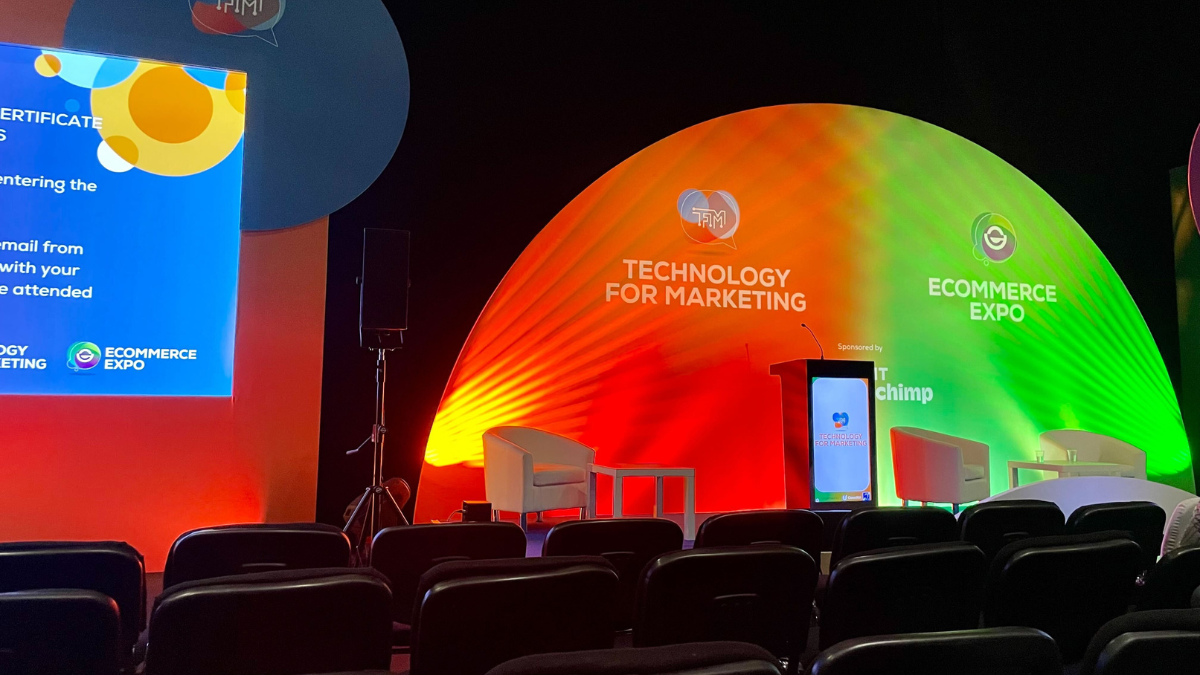Technology for Marketing and eCommerce Expo, the UK’s biggest marketing technology and e-commerce events, wrapped up this week, bringing together thousands of retailers, brands and technology providers.
Unsurprisingly, artificial intelligence (AI) was top of mind in many sessions. In a session around integrating AI into business processes, AI consultancy company Alcea’s Founder and Managing Director Ellen Bishop emphasised the importance of introducing new technologies to streamline existing processes. Business leaders don’t need to be experts in AI, said Bishop, but rather understand what business results they want from AI integrations.
One of the most anticipated sessions of the conference, chaired by Mailchimp Intuit and supported by executives from Shopify and Quickfire Digital, focused on the use of data. Revealing that 70% of consumers say they will give companies their data but want to know what it will be used for, Mailchimp Intuit GM of EMEA Jim Rudall mentioned that consumers now are more demanding and have certain expectations, especially around the use of data. Stephen Rogan, Head of Merchant Success at Shopify, bolstered the point by adding that features like digital payments, free returns and loyalty discounts are all expected from companies at this point and customers are willing to surrender their data in exchange for e-commerce processes with less friction and more benefits. With new AI tools making this a more realistic possibility, it’s easy to jump on the trend and automate most processes, said Quickfire Digital Founder Nathan Lomax, but it poses a danger to companies to leave AI unattended. Lomax mentioned that each company has a uniqueness that made them successful, and leaving everything to automation threatens companies’ authenticity. Lumax also emphasised the importance of human to human connection, stating that building communities should be in every brand’s marketing strategy for 2025.
The discussions surrounding data and AI continued on the second day, with Adam Ull, Global Product Information Lead at H&M, speaking about Product Information Management (PIM) and H&M’s Product Data Hub (PDH). According to Ull, the future of commerce holds more data, giving companies more context and allowing them to provide more product information to customers. Taking a case in point, Ull shared how tracking customer behaviour online can reveal their wants and identify gaps in the retailer’s offering. Based on this data, H&M can then re-enrich products and add new attributes, delivering what the customers want.
The importance of understanding your audience and the context in which they are in was also stressed by Hamish Stacy, OREO Consumer Data Lead at Mondelez International. Speaking to Richard Robinson, MD of The Future Factory, Stacy shared insights on how brands can create interactive and immersive digital activations to engage customers. Revealing the key to a successful activation, Stacy told the audience: ‘Ideas should be strong but simple’.
Giving two examples of such ideas, Stacy pointed to the success of Cadbury’s virtual Easter egg hunt on the ‘Worldwide Hide’ platform and Oreo’s partnership with Pacman. The partnership allowed Oreo to tap into the gaming market and connect with Gen Z and Gen Alpha, adding eight maze embossments to cookies and allowing customers to scan and complete games on their phones. In addition to best practice examples, Stacy shared a lesson learned from this year’s Super Bowl. Oreo’s ‘Twist On It’ ad invited viewers to order cookies to be delivered within just fifteen minutes. Unlike the other activations, however, this was not as successful. Explaining what went wrong, Stacy revealed that they did not consider that the consumers would already be eating and drinking.
With 2025 rapidly approaching, the event’s speakers offered insights to help brands grow in the coming year. Diary of a CEO’s Marketing Director Grace Andrews and Failure and Experimentation Manager Grace Miller revealed that video is expected to account for 82% of all internet traffic by 2025. They further highlighted that Instagram Reels have an average reach rate of 30.81% — which is double that of other content forms — and that short-form video content offers marketers the highest ROI of any social media marketing strategy. Listing the five benefits of video content, the speakers pointed to reach, community building, experimentation, insights, and brand recall. When asked whether video content is suitable for B2B audiences, Andrews said: ‘It’s always human to human’. Ultimately, despite the rapid and continuous advancements in technology, the focus on human connection should not be forgotten.
Featured image: Technology for Marketing x eCommerce Expo

